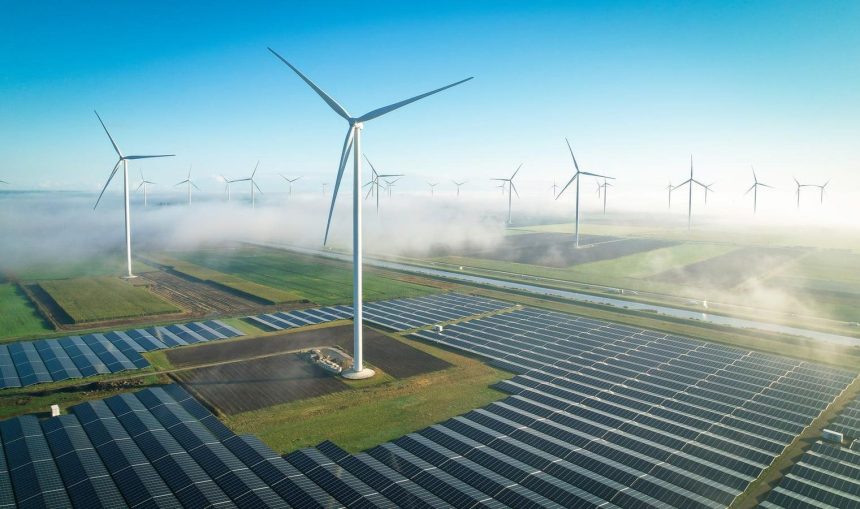Seyed Madaeni is co-founder & CEO of Verse, whose Aria software helps organizations procure the best clean power options for their business.
Corporate clean energy procurement is on the rise. Progress was initially spurred by a handful of early adopters, such as Google and Meta. Today, fresh mandates, volatile energy markets, new incentives and increasing concerns about climate change are combining to drive more companies to set clean energy goals and emissions reduction targets and rethink how they buy power.
Based on my experience helping organizations determine the best clean energy procurement philosophies and power purchase agreements for their businesses, here are two popular levers companies are using to decrease their corporate carbon footprint, as well as brief overviews of the most common corporate renewable energy goals.
Clean Energy Levers
• Renewable Energy Credits (RECs)
Renewable energy credits, commonly known as RECs, have been the most popular method for companies to support clean energy generation without directly purchasing renewable electricity. When a renewable energy project generates electricity and feeds it into the grid, it also generates RECs. Each REC represents one megawatt hour (MWh) of renewable energy produced. Companies can purchase RECs from renewable energy producers and use them to offset their own greenhouse gas emissions.
This indirect support for renewable energy has historically encouraged the growth of clean energy projects, but RECs also have drawbacks. Studies have shown that they do not meaningfully reduce carbon emissions. Companies just beginning their clean energy journey may want to start with RECs, but regulatory and policy changes in the next few years could complicate emissions disclosures related to RECs.
• Power Purchase Agreements (PPAs)
Corporate power purchase agreements are long-term contracts between a renewable energy provider and a corporate power buyer. PPAs allow companies to procure electricity from renewable sources over an extended period. Corporate PPAs often span 10 to 20 years, providing stability for both parties and enabling the financing of new renewable energy projects.
By committing to purchasing renewable electricity through PPAs, corporations can secure a predictable and cost-effective energy supply that can help reduce their carbon emissions. In my experience, however, companies typically need to have 10 megawatts (MW) of load (i.e., use about 100 GWh of electricity per year) to make contracting PPAs worthwhile.
Corporate Clean Energy Goals
Different companies, policymakers and nonprofits advocate for different goals. Below are three of the most popular.
1. 100% Renewable Energy (RE)
Achieving 100% renewable energy involves matching the energy a business consumes with renewable energy produced on an annual basis—e.g., a company will procure 1 MWh of clean energy for every 1 MWh of energy it uses over the course of a year. Many corporations have pledged to reach this milestone as part of their sustainability targets, and we’re seeing companies increasingly meeting some or all of their renewable energy through PPAs. The value of using PPAs to achieve 100% RE is that they directly lead to new clean energy on the grid and send a strong market signal for new renewable electricity. However, many companies use RECs, too (especially those early in their clean energy journey). Regardless of what levers you use, making a commitment toward 100% RE can be a great starting point in the corporate clean energy journey and help drive innovation and sustainability across the entire supply chain.
2. Emissionality
Emissionality assesses the impact of a clean energy project on reducing greenhouse gas emissions. It considers numerous factors, such as timing (e.g., what hour of the day the project produces energy), as well as the project’s location and the grid’s existing energy mix.
For instance, California’s electric grid has more renewable energy resources than Montana’s, which mostly runs on coal and gas; emissionality places higher value on a renewable project located on the Montana electric grid because it displaces dirtier generation sources. The Emissions First Partnership argues that by choosing projects with high emissionality, corporations can ensure their investments lead to the most cost-effective emissions reductions. A recent report sponsored by Meta suggests that carbon matching (i.e., emissionality) enables the maximum carbon abatement for the least cost.
3. 24/7 Carbon-Free Energy (CFE)
24/7 CFE goes beyond offsetting emissions with renewables on an annual basis; it involves ensuring a continuous, reliable and carbon-free energy supply around the clock. Achieving this requires a highly sophisticated combination of renewable energy sources, energy storage technologies and demand response strategies.
Pioneered by Google, this approach focuses on the end goal of complete decarbonization of the electric sector by incentivizing commercialization of “last mile” decarbonization technologies like long-duration energy storage. Advocates for 24×7 CFE argue that while these last mile technologies may be more costly in the short term, investment in their commercialization should lead to a least-cost long-term solution. Microsoft has a similar philosophy—”100/100/0″—under which it aims to match 100% of its electricity consumption, 100% of the time, matched by zero-carbon energy purchases.
Choosing The Best Option For Your Company
There are many different opinions about how best to achieve renewable energy goals and reduce carbon emissions to get to net zero. For starters, I recommend first familiarizing yourself with RECs and PPAs (here is a great explanation of RECs, and one for virtual PPAs).
Defining clean energy goals for your business can be more complicated. You can start with an energy audit of how much energy you use now (and how much you’ll need in the future), as well as when and where you use it. Utilities have different green tariffs, and electric grids and wholesale markets have unique pricing, congestion and renewable penetration—all factors that affect cost and carbon-reduction metrics.
Also, think about what type of clean energy assets will be best for your business. Wind? Solar? Energy storage? Each has a different generation profile, and you may want a combination to get the maximum carbon reduction per dollar.
Finally, consider joining an organization like the Clean Energy Buyers Association, the Sustainable Purchasing Leadership Council, or the World Business Council for Sustainable Development. They have excellent resources and can connect you with other businesses exploring clean energy goals.
Forbes Business Council is the foremost growth and networking organization for business owners and leaders. Do I qualify?
Read the full article here









